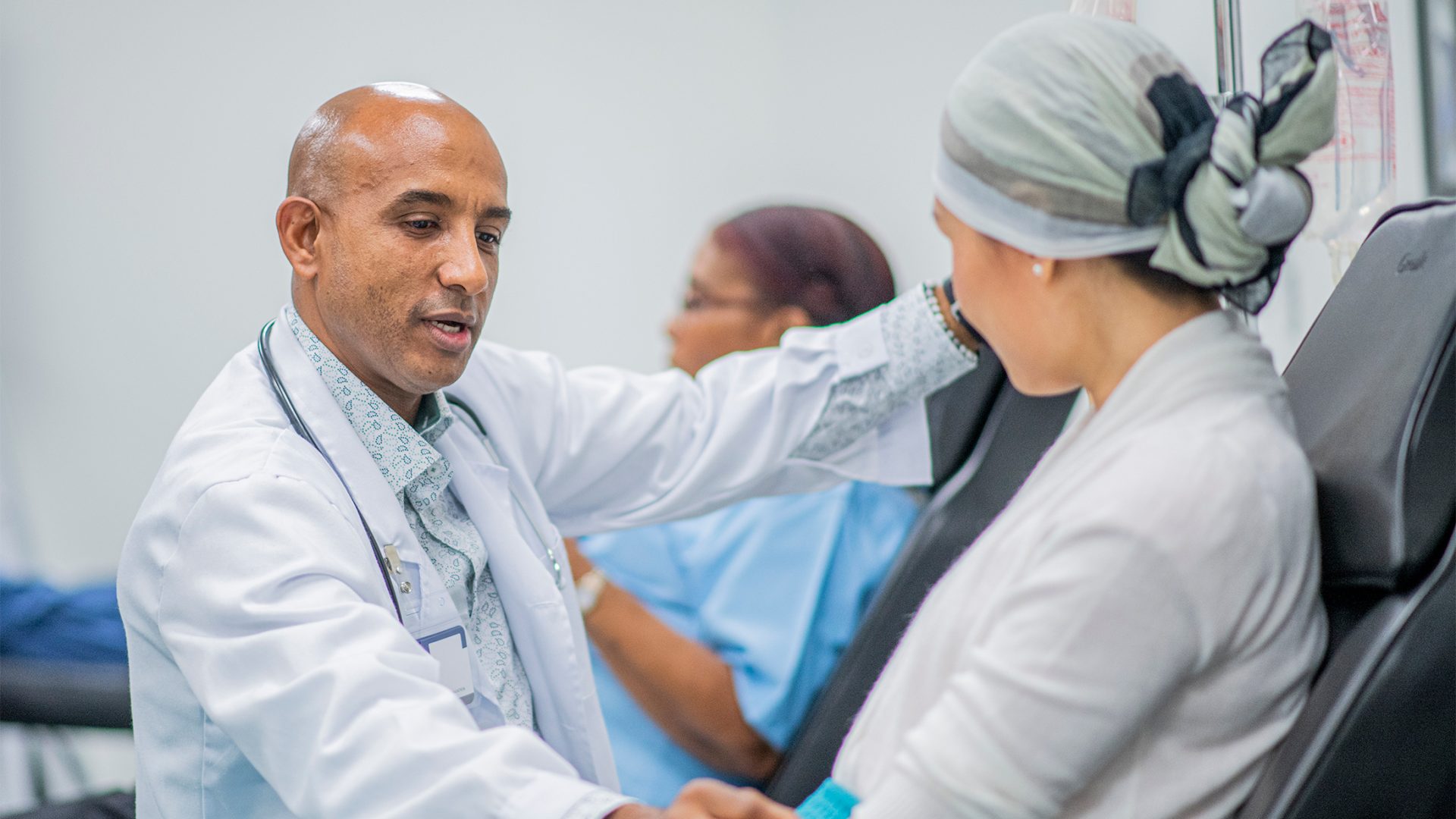Medical oncology uses chemotherapy, biological agents or other medications, such as targeted therapies, immunotherapy and oral (pill form) chemotherapy, to treat cancer. Chemotherapy can be used alone or as part of a cancer treatment plan that may also include surgery, radiation therapy, hormonal therapies or biological therapies. It may be used to cure cancer or to treat unpleasant symptoms the cancer is causing such as pain or bleeding. Each patient’s treatment time varies and depends on the specific cancer treatment plan. Treatment ranges from a single day to several consecutive days or continuously in an outpatient or inpatient setting.
Collaborative Approach to Care
Fort Wayne Medical Oncology and Hematology‘s Board-certified medical oncologists and hematologists provide the highest level of clinical care and treatment. Extensively trained in their fields, our physicians take a collaborative team approach, ensuring each patient receives the latest diagnostic studies and therapies. Our advanced practitioners work in close partnership with our medical oncologists and hematologists as members of your healthcare team.
Cancers We Treat
Cancers we treat include bladder cancer, brain cancer, breast cancer, cervical cancer, colorectal cancer, head and neck cancer, hematologic cancer, kidney cancer, liver cancer, lung cancer, melanoma, pancreatic cancer, prostate cancer, sarcoma and more.
Exceptional Care, Close to Home
Our cancer center provides an in-house laboratory performing all routine blood work and an in-house specialty pharmacy providing convenient dispensing and delivery of oral cancer drugs. Patients have access to a diverse range of support services including 24/7 pharmacy assistance and nutritional and financial counseling that provides unparalleled access to comprehensive, integrated cancer care close to home.
